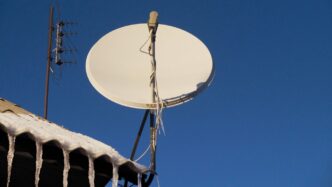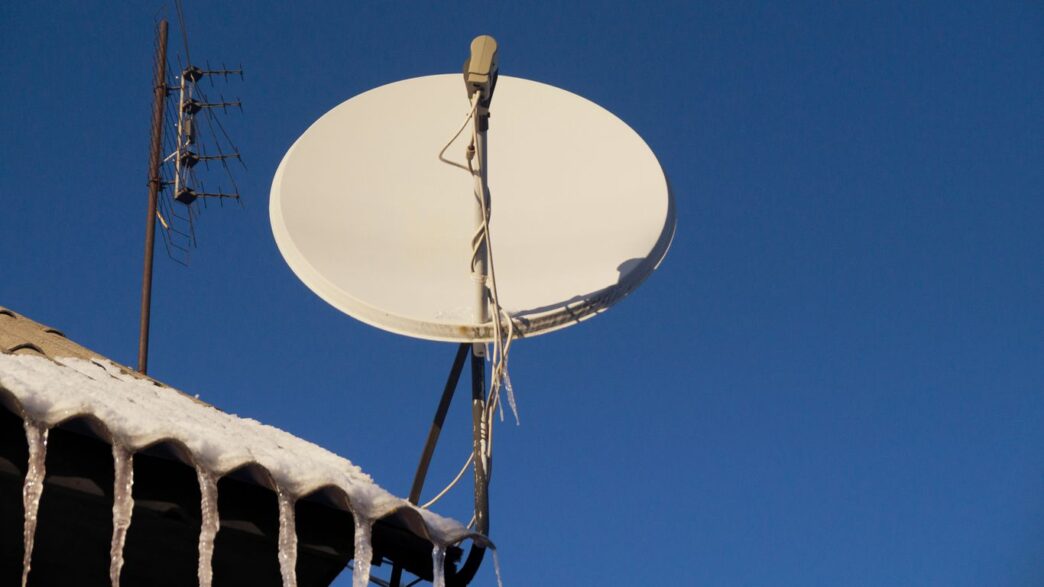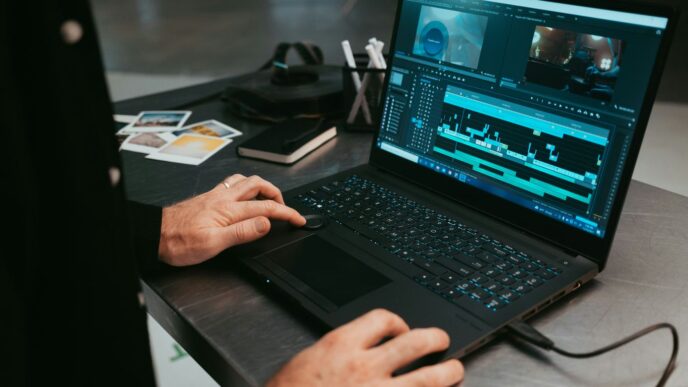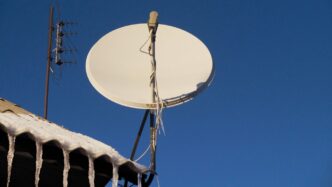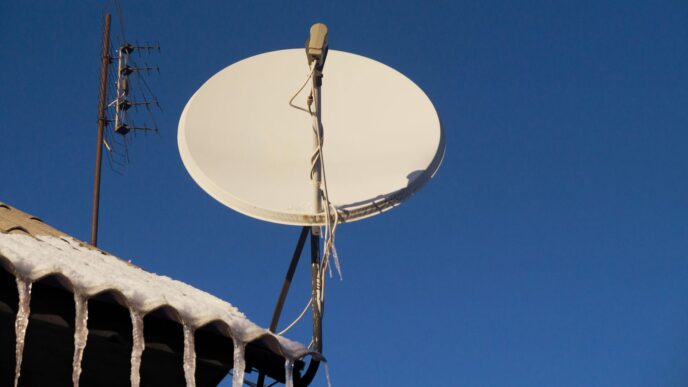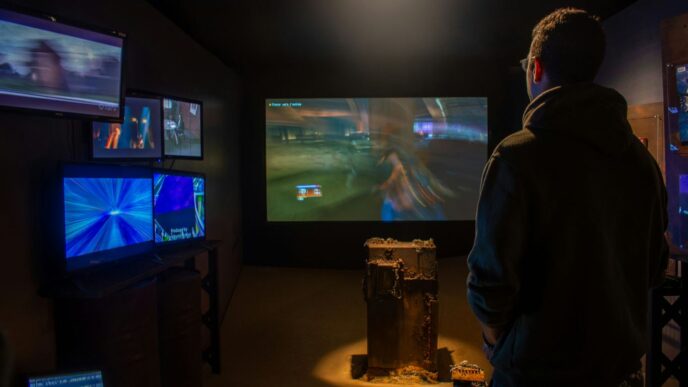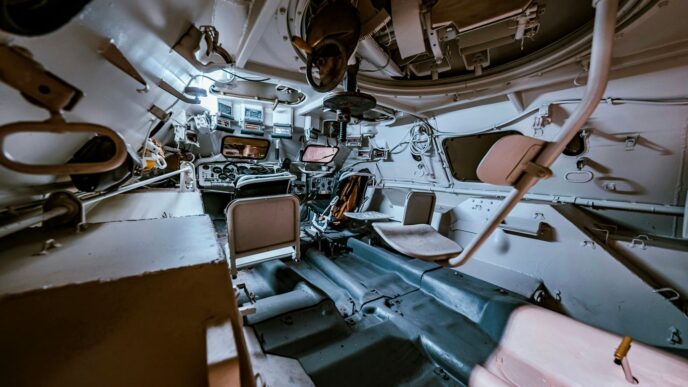Starlink reviews in 2025 are everywhere, and honestly, people have a lot to say. Some folks swear by it, especially if they live out in the boonies or spend their days roaming around in an RV. Others think it’s just too expensive if you’ve got cable or fiber at home. After reading through a ton of real user stories, it’s pretty clear: Starlink is a total game-changer for some, but not the best choice for everyone. Let’s break down what people are actually saying this year.
Key Takeaways
- Starlink is a lifesaver for folks in rural and remote areas, but probably overkill if you have wired internet or solid 5G at home.
- Most users report easy setup and solid reliability, even in bad weather, but the hardware isn’t cheap and needs a clear view of the sky.
- Download speeds keep improving, with some people seeing over 300 Mbps, but performance can still dip in crowded areas or during peak times.
- Customer support is mostly handled through the app, and while some get quick answers, others say it’s hit-or-miss.
- Starlink’s no-contract plans and global coverage make it popular with digital nomads, RVers, and anyone who moves around a lot.
Starlink Reviews: Real User Insights from 2025
Experiences in Rural and Remote Locations
If you live somewhere far out, Starlink is probably on your radar. The number one thing real users keep repeating in 2025: Starlink is a complete game changer for rural homes. People in spots no cable or fiber company will touch — tiny towns, mountains, and farms — finally stream, game, and work without dial-up or DSL frustrations. Here are common points shared by rural folks:
- Coverage is available almost anywhere with a clear sky, thanks to thousands of satellites overhead.
- Starlink is often the only real option for fast, modern internet where traditional providers don’t offer service.
- Install can be tricky outdoors, but once set, speed and reliability beat older satellite choices every time.
| Experience | Positive Notes | Challenges |
|---|---|---|
| Rural households | Fast speeds, no contracts | High upfront cost |
| Remote businesses | Global coverage, low-latency | Needs clear sky view |
| Farms & Ranches | Stream, work calls finally easy | Creative mounting needed |
Reviews from Long-Term Users
Some people have had Starlink for over four years now. Their feedback keeps coming back to the huge gap Starlink filled, especially when nothing else would work. The biggest praise is for wide coverage and generally solid performance, but a few things bug users:
- Monthly fees and equipment costs do add up — a few have spent $6,000+ over several years.
- Hardware is updated every year or two, with each version making it easier to live with (lighter dishes, modular mounts).
- Support is hit-or-miss: Some never need help, others wish responses came quicker.
Longtimers say as long as you accept the occasional hiccup, Starlink is worlds better than old-school satellite or slow DSL.
Feedback from Digital Nomads and RVers
Digital nomads and travelers have a lot to say. Full-time RVers and vanlifers swear by Starlink’s flexibility — you pay by the month, pause anytime, and take it almost anywhere. That’s real peace of mind for people always on the move. Three real-world insights from this crowd:
- Starlink’s "Roam" plans are popular, but data limits can be frustrating for heavy streamers.
- Quick setup makes it ideal for travelers — most people connect in minutes at a new spot, as long as trees aren’t in the way.
- Account issues can cause headaches, like service getting suspended due to expired cards or typos in sign-up, but real support stories often resolve these quickly.
For those who travel the country or bounce between campsites, innovative gadgets like Starlink are making life much easier — even if you sometimes need to troubleshoot on the fly. Would rural city-dwellers recommend it for a typical home? Maybe not if cable or 5G are available. But if you live or roam at the edge of what’s possible, this kind of connectivity is a lifeline.
Performance and Reliability According to Starlink Reviews
The story with Starlink in 2025 is pretty clear: it’s not just different from other satellite internet providers, it’s better. Most users will tell you that Starlink now genuinely feels like a real alternative to cable and fiber—especially in places where those aren’t options. Here’s a look at what users are actually seeing day-to-day with speeds, latency, and reliability.
Typical Download and Upload Speeds
Customers have noticed a jump in speeds over the past few years. Here’s a breakdown based on user reports:
| Year | Avg Download (Mbps) | Avg Upload (Mbps) | Avg Latency (ms) |
|---|---|---|---|
| 2022 | 89 | 14 | 60 |
| 2023 | 130 | 15 | 50 |
| 2024 | 113–150 | 19–23 | 29–38 |
| 2025 | 300–350 (peak) | 20–30 | 20–30 |
- The older numbers often came with big swings in consistency. By 2025, most home setups see download speeds over 300 Mbps, uploads in the 20-30 Mbps zone, and latency low enough for online gaming.
- Users mention that upgrades to both the dish and the ever-growing satellite network have made the experience feel more stable, no matter the time of day.
Latency and Online Gaming Experience
- Gamers especially notice the big drop in latency. While early Starlink users sometimes saw 60 ms pings (or higher), now it’s routinely around 20–30 ms. That’s close to what some cable or even fiber customers get.
- Faster response times mean video calls are clearer, and gaming doesn’t suffer from the “rubber-banding” or frustrating lag spikes that used to plague satellite internet.
- There’s the occasional blip if a satellite handoff doesn’t go smoothly, but users say this is now rare.
How Weather and Obstructions Affect Service
- Starlink still needs a clear view of the sky, so trees or buildings can mess with your signal. The Starlink app helps, warning you if there are obstructions so you know exactly where to move the dish.
- When it comes to weather, lots of folks are surprised by how tough Starlink is. Users share stories of rain, snow, even hail, and the connection staying solid. Streaming and gaming both work without obvious interruptions, even during storms.
- That said, heavy obstructions, whether it’s thick tree cover or being parked next to a building, are still trouble—something to keep in mind if you’re considering going mobile or setting up in a forested spot.
Reliability is honestly where Starlink shows how different it is from previous satellite providers. Outages used to be common, but now they barely get mentioned in recent reviews. If anything, users today are more likely to talk about minor slowdowns in high-demand areas than actual service drops. It’s one of those things—kind of like what you’d expect from a luxury car maker—where the tech has started to catch up with the hype, and people are genuinely impressed.
Bottom line: if you need fast, always-on internet far from the city, Starlink in 2025 is the real deal.
Equipment Evolution: Starlink Hardware in 2025

Changes in Dish and Router Technology
Starlink’s gear has come a long way since its early days. Back in 2022, the Dishy 2 was big, heavy, and loaded with actuator motors for satellite tracking. Now, in 2025, the Dish V4 is lighter, thinner, and drops the motors for a simpler mounting setup. There’s even a built-in modular interface so you can swap out mounting parts as needed. On the router side, the standard Starlink router upgraded to Wi-Fi 6 last year, boosting local device speeds, better range, and adding mesh support for homes that need more coverage. These changes make Starlink equipment easier to live with—and much less fiddly—than it used to be.
Here’s a side-by-side of the major dish hardware versions:
| Model | Released | Weight | Motors | Wi-Fi Version | Notes |
|---|---|---|---|---|---|
| Dishy 2 | 2022 | Heavy | Yes | Wi-Fi 5 | Motorized, robust |
| Dish V4 | 2024 | Lighter | No | Wi-Fi 6 | Modular, streamlined |
| Mini | 2025 | Lightest | No | Wi-Fi 6 | Portable, compact |
Setup Process and Everyday Use
Getting Starlink running is much more straightforward these days. Even total beginners can:
- Unbox the dish and snap in the cable.
- Stick it on the ground or use the included stand.
- Plug in the router and follow the app for setup.
If you want a more permanent placement, Starlink now offers pro roof installs for a fee, but people with a drill and ladder can still DIY. The mobile app lets you aim the dish, see signal strength, and handle everything from device management to support requests. Day-to-day, the gear just sits in the background—no constant resets or cable wrangling.
Mobile and Modular Mounting Options
Starlink isn’t just for houses anymore. The Mini is made for folks on the move. Whether you’re camping, RVing, or living full-time on the road, it comes with:
- A lightweight, snap-together kickstand.
- Modular clamps and mounts for cars, RVs, and odd spots.
- Shorter cables for quick setups, or swap for longer runs if parked awhile.
Community forums have exploded with creative mounting solutions (DIY PVC holders, mag-base roof mounts), and the hardware’s gotten tough enough for bumpy rides and weather. Even if you’re not the handy type, you can find a mounting kit that matches your lifestyle now.
Overall, in 2025, Starlink’s hardware actually feels like it belongs in this decade: easier, lighter, and built for more than just roof-life. The tech gets out of your way, and that’s the real win.
Comparing Starlink to Traditional Internet Providers
If you’re wondering how Starlink stacks up to cable and fiber internet, let’s just say: it’s not a direct competition. Starlink’s real value shows up in areas where cable or fiber lines just don’t reach.
Here’s a quick comparison using typical numbers seen in 2025:
| Provider | Monthly Cost | Typical Download Speed | Upload Speed | Latency | Contracts |
|---|---|---|---|---|---|
| Starlink | ~$120 | 60–120 Mbps | 10–25 Mbps | 30–60 ms | None |
| Cable | $60–$80 | 300–1000 Mbps | 20–40 Mbps | 10–30 ms | 1–2 years |
| Fiber | $70–$120 | 500–2000 Mbps | 100–1000 Mbps | 5–20 ms | 1–2 years |
- In cities and suburbs, cable and fiber run circles around Starlink on speed, price, and stability.
- Starlink is contract-free, which is rare—most traditional ISPs love their 2-year lock-ins and penalty fees.
- For rural users? Starlink might be the only way to escape slow DSL or even lack any connection at all.
Starlink isn’t the only satellite game in town, but right now, it’s way ahead of the pack. Legacy options like HughesNet and Viasat just don’t compare. Here are some real-life notes I hear all the time:
- Starlink’s low-Earth orbit satellites bring latency way down—think 20–60 ms instead of the 600 ms range.
- Download speeds are routinely 100 Mbps and up (sometimes over 300 Mbps), while old-school satellite internet is lucky to clear 25 Mbps.
- No data caps. Competing services usually slap on harsh overage charges after just a few dozen gigabytes.
- The setup is quick. No waiting weeks for a technician out in the sticks.
Honestly, there are several situations where Starlink is a lifesaver—here’s where it shines:
- Remote towns or mountain homes: Places where even DSL lines end (or just aren’t maintained anymore).
- Traveling RVers, van-lifers, and work-from-the-wilderness folks: Starlink’s mobile plans mean you can work from a field, forest, or desert with reliable internet.
- Emergency backup: I’ve seen local businesses keep a Starlink kit on-site for times when storms knock out hard-wired ISPs.
If you’re somewhere with a solid wired connection, Starlink probably won’t save you money or boost your speeds. But for everyone else—especially those who never dreamed of streaming in HD or making a crisp video call out in the country—it’s a real alternative that just didn’t exist before.
Starlink Plans and Pricing: What Reviews Reveal

Starlink’s pricing in 2025 keeps making waves, mostly because it’s a moving target—sometimes great, sometimes a little rough. Plans cover everything from budget home internet to full-on, unlimited data for digital road warriors. Here’s a breakdown of what real users are saying about the costs, the upsides, and the gotchas.
Monthly and Upfront Equipment Costs
There are two main costs with Starlink: equipment and the monthly plan. The days of paying half a grand for a dish seem to be gone, with the base hardware kit now about $349 for most people. Occasionally, folks snag refurbished units for even less (when they’re in stock). Service fees, on the other hand, keep creeping up for some. For example, one user joked their monthly cost "just had another birthday." The trade-off is the massive coverage area and consistent speed compared to old-school satellite.
Here’s a quick look at typical costs for home users:
| Plan | Monthly Cost | Upfront Cost | Download Speed | Data Cap |
|---|---|---|---|---|
| Residential Lite | $80 | $349 | 50–100 Mbps | Unlimited |
| Standard Residential | $120 | $349 | 150–250 Mbps | Unlimited |
| Roam (50GB) | $50 | $349 | 45–230 Mbps | 50GB (can add more) |
| Roam Unlimited | $165 | $699+ | Varies | Unlimited |
- In high-demand areas, there can be one-time surcharges up to $1,000 just to activate service.
- Upfront hardware is usually the same, but the price for business-grade or ‘flat’ equipment can hit $1,499.
- Some users have reported occasional price drops for gear, but these seem regional and depend on availability.
No-Contract Flexibility and Transparency
If you hate contracts, you’ll love this: Starlink lets you cancel or pause your service almost at will, especially with the Roam plan. You just open the app, tap a couple buttons, and you’re done. There’s no early-termination penalty or long-term lock-in. Here’s what users mention most:
- You only pay for the months you actually use (great for people who travel half the year).
- Plan policies mean you can start or stop without jumping through hoops.
- The downside is that Starlink might change prices with little warning—users in some cities saw fees spike quickly.
- If you’re new, double-check your region for possible surcharges before ordering.
Plan Options for Home, Lite, and Roaming Users
Starlink’s approach is to have a plan for every kind of user, but sometimes the options can feel a bit tangled. Plans aren’t strictly arranged by speed; it’s about use case and how much you want to spend. Here’s how users compare the most common options:
- Residential Standard: The catch-all for those who live outside cable and fiber zones. It costs more but gives higher speed and full network priority.
- Residential Lite: A little slower and deprioritized during busy hours (think evenings and weekends), but at a big discount. Still no data caps.
- Roam: This one’s the game-changer for RVers, nomads, or anyone working on the road. The plan can be paused, but speeds and priority depend on where you’re parked. Unlimited Roam is expensive but lets you use Starlink just about anywhere; the basic Roam is $50 a month with a 50GB soft cap.
A few user notes:
- People in busy areas sometimes pay much more for the same plan, just because of demand surcharges.
- In places with zero alternatives, Starlink’s even the basic Lite plan is called "a life-saver."
- There’s been a lot of talk about business and ‘priority’ plans, but most regular folks stick with Residential or Lite.
So, in 2025, Starlink’s pricing is all about flexibility—just be ready for some regional sticker shock if you’re in a hotspot. The freedom from contracts and the variety of plans are what people seem to like best.
Starlink Value Judged by Real Users
Is Starlink Worth the Price?
Let’s talk about money. Starlink is definitely not cheap. Most folks pay about $120 a month, and there’s also a $599 upfront cost for the hardware. Here’s the thing though: people in rural or remote areas say the price makes sense because it’s the only truly reliable option they’ve got. If you’ve got cable or fiber available, you’ll spend less and get faster service from those providers—but if you’re off the grid, Starlink’s speeds and reliability are a huge step up from old satellite or DSL connections.
Here’s a quick price-to-performance comparison:
| Plan Type | Avg. Monthly Cost | Typical Speed (Mbps) | Upfront Hardware Cost |
|---|---|---|---|
| Starlink | $120 | 60-120 | $599 |
| Rural DSL | $60 | 8-25 | $0-199 |
| Fiber (where available) | $70-$100 | 500-2000 | $0-199 |
Scenarios Where Starlink Makes Sense
There are specific situations where Starlink users consistently say the investment is worthwhile:
- You live in a rural area with no wired internet options, or your only choice is slow DSL.
- You rely on the internet for work calls, school, or streaming and can’t settle for unreliable cellular service.
- You move around regularly (RVing, van life, off-grid living) and need an internet connection everywhere you go.
On the flip side, Starlink probably isn’t your best bet if:
- You already have access to fiber or fast cable.
- You’re looking for the absolute lowest price, regardless of speed.
For a bigger picture of how speedy it can get, these 2025 speed tests show Starlink is faster than ever.
Customer Perceptions of Value for Money
Most users split into three camps when it comes to value:
- "Absolutely worth it. I had nothing before, and now all my devices work just like in the city." — This group is thrilled, and they don’t mind the price.
- "It works fine, just wish it was a little cheaper." — People in the middle are happy with the connection but always watching out for discounts.
- "I get better value elsewhere." — Folks with access to fiber or cable say Starlink’s price is just too high for what you get.
From comment sections and community forums, a few common opinions pop up:
- "It’s a lifesaver for rural families."
- "Some months I wish I had more speed for what I pay, but I’m still glad I switched."
- "Pricey, but beats the heck out of spotty LTE."
In short, if you’re far from cable lines and want internet that just works, Starlink users tend to say the value is there. City folks? They’ll stick to traditional wired more often than not.
Customer Support and Starlink’s Reputation in 2025
Starlink has shaken up what folks expect from satellite internet, but the support experience isn’t quite what you’d find with your local cable company. Let’s get into what real users say in 2025, and how they rate the support side of things—warts and all.
App-Based Support Experience
Everything with Starlink support starts in their app. Forget picking up the phone or chatting live with a person—if you’ve got a problem, you open a ticket in the Starlink app, and that’s pretty much it. Some folks like how convenient it is, while others find it a hassle if there’s a complex issue that needs back-and-forth explanations.
Here’s a quick snapshot of what users report:
| Support Feature | User Satisfaction (1–5) | Notes |
|---|---|---|
| Ticket Response | 3.5 | Quick for simple fixes, slower for tricky problems |
| App Usability | 4 | Intuitive for most users |
| Availability of Live Agent | 2 | Only rare cases, mainly automated |
Community-Driven Solutions and Forums
If the app doesn’t give you what you need, the community often jumps in. Starlink users have built up a surprisingly active set of forums and knowledge bases. Real talk, more than one person has fixed a tricky dish placement or weather issue after reading a neighbor’s tip.
Perks of the community approach:
- Lots of troubleshooting guides written by users
- Honest opinions about hardware quirks
- Fast feedback, especially for newbies adjusting their dish
It’s a little wild west, but when the official support is slow, the internet hive-mind can be faster. The spirit here is a bit like what Virgin Galactic’s space tourism fans have: tight-knit, sharing technical tips and encouragement.
Reported Issues and Areas for Improvement
For all its tech, Starlink doesn’t always get gold stars for support. People notice things like:
- No live chat or phone line for urgent problems
- Sometimes you wait days for a response if your issue’s odd
- App is better for basic problems, but complex stuff drags out
On the plus side, outages and technical problems just aren’t as common as they were in Starlink’s early years. Most folks say the need to even contact support drops the longer you use the service.
Broken down, here’s what folks mention most about Starlink’s current support:
- Quick help for basic connectivity or payment questions
- Slow turnaround for billing disputes or equipment swaps
- Wish for more direct ways to reach a person
Overall, Starlink’s support still has some growing to do, especially as more people sign up in 2025. Still, many users say that the improved reliability more than makes up for occasionally spotty service interactions.
Conclusion: Is Starlink Worth It in 2025?
So, after spending a good chunk of time with Starlink and hearing from other users, here’s where I land. If you live way out in the sticks or just can’t get decent wired internet, Starlink is honestly a lifesaver. It’s not cheap, and the setup can be a little awkward (especially if you’re not a fan of running cables through your house), but the speeds are solid and the connection holds up even when the weather gets rough. For folks who have fiber or fast cable available, though, Starlink probably isn’t the best deal—you’ll pay more for less speed. But for everyone else, especially in rural spots, it’s a real game-changer. Sure, customer support could be better, and the price stings, but having reliable internet where there used to be nothing? That’s hard to beat. If you’re on the fence, just weigh your options and see if Starlink fits your needs. For a lot of people, it’s the only thing that really works.
Frequently Asked Questions
Is Starlink good for people living in rural or remote areas?
Yes, Starlink is a great choice for people who live far from cities or in the countryside. It works almost anywhere with a clear view of the sky, so even places without cable or fiber internet can get fast and reliable service.
How fast is Starlink internet in 2025?
Starlink’s download speeds can reach up to 270 Mbps, but most users see speeds between 60 and 120 Mbps. Upload speeds are usually between 20 and 50 Mbps. The actual speed depends on your location and how many people are using Starlink nearby.
Can you play online games or stream videos with Starlink?
Yes, you can play games and stream videos with Starlink. Latency is usually low, around 20-60 ms, which is good for gaming and video calls. Streaming movies and shows works well, even during bad weather, as long as the dish has a clear sky view.
Is Starlink more expensive than regular internet providers?
Starlink costs more than most cable or fiber plans. The regular home plan is about $120 per month, plus an upfront equipment fee. There are no hidden fees or contracts, but it is pricier than traditional options if you have them.
How hard is it to set up Starlink?
Setting up Starlink is pretty easy. You need to place the dish outside with a clear view of the sky, connect it to the router, and use the app to check for any blockages. Most people can get it working in less than an hour.
What happens if I need help or want to cancel Starlink?
Most support is handled through the Starlink app or by email. You can cancel anytime without any fees, and you own the equipment, so you can even sell it if you stop using the service. Some users say response times can be slow, but there’s a big online community to help with common problems.

